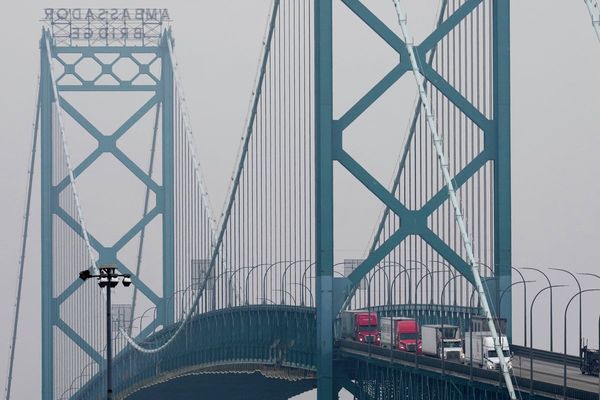
There is an interesting conversation at the beginning of 1988 classic English, August, the debut novel by 1983 batch Indian Administrative Service (IAS) officer Upamanyu Chatterjee. The novel begins with a chat in a car between young IAS probationer Agastya Sen and his Yale-alumnus friend Dhrubo.
Dhrubo: “…But here in Delhi, all over India, education is biding time, a meaningless accumulation of degrees, BA, MA, then an M.PhiL while you join the millions in trying your luck at the Civil Services exam. So many people every year seem to find government service so interesting.”
Agastya: “You’re wrong about education, though. Most must be like me, with no special aptitude for anything, not even wondering how to manage, not even really thinking. Try your luck with everything, something hopefully will click. There aren’t unlimited opportunities in the world.”
Thirty years later, which also saw Upamanyu becoming joint secretary to the government of India, Agastya’s assessment of most of the entrants to coveted positions in Indian bureaucracy is still relevant.
That’s not to say that demographic composition of bureaucracy hasn’t changed in the intervening decades. It’s a period in which socio-economic, regional and academic profile of entrants to India’s bureaucracy has undergone some changes.
For all practical purposes, however, such changes haven’t gone beyond what one may call the de-Stephanisation of bureaucracy in the post-liberalisation as well as post-Mandal period.
What didn’t change was the hegemonic grip of generalists—that’s what IAS is mostly constituted of—on positions and assignments that need the expertise of specialists. The no-aptitude and no-expertise hold on such positions is obviously a colonial legacy of largely unreformed civil services in India.
It’s a type of structural anomaly that a conservative IAS-led decision-making and advisory machinery would not be interested in addressing. They have no incentive to do so, when they are the obvious beneficiaries of the system.
Based on the recommendations of various bodies, committees and commissions mandated to look into the issue—ranging from Tenth Report (2008) of the Second Administrative Reforms Commission (Second ARC, 2005) to the Justice B. N. Srikrishna-headed Sixth Central Pay Commission report (2006)—the onus on such reforms was on political leadership, which has been reluctant to bite the bullet.
Besides the turf-saving conservatism of governmental bureaucracy, what has been holding the political class back from taking reformist measures is the attendant political risk of being unpopular with a section of the population.
In an exam-loving country, a lifelong ticket to powerful positions in bureaucracy has defined career aspirations of generations. Any talk of expertise and professional scrutiny for higher appointments is expected to be unpopular, not only with serving officers but also with those aspiring to join after clearing the recruitment examination. I explored some aspects of this entitled psyche among the aspiring bureaucrats in two earlier pieces for this website.
Also, any whiff of attracting talent from outside the formal bureaucratic apparatus gives them a chance to raise the alarm about privatisation of public services. At the heart of it is also the fear of being deprived their exclusive claim on being called government officers in a country trapped in state-ordained arbiters of social recognition. It’s a type of third-world malady, perhaps rooted in what Hamza Alvi called “overdeveloped state”.
Seen in this context, the official circular and newspaper advertisement issued by the Department of Personnel and Training (DoPT) on June 10, for inviting applications for 10 posts of joint secretaries in different ministries under lateral entry scheme, is a long-overdue move.
The scheme has sought to attract domain expertise by making private sector employees with relevant experience of 15 years eligible to apply, along with officers of state governments, union territories and public sector undertakings (PSUs), universities, autonomous bodies and research institutes. The appointment would be in the form of a three-year contract (extendable to five years) for private sector employees while it would be considered deputation for government employees. The sectors for which hiring has been initiated are diverse: revenue, financial services, economic affairs, agriculture, environment, energy, infrastructure and commerce.
Far from being reformist, the Modi-led National Democratic Alliance (NDA) government has been disappointing in its failure to initiate bureaucratic reforms, both at recruitment and assessment levels. This move, though late, is a small beginning which will need proper structures put in place for lateral hiring, as well as for pushing more basic reforms at lower levels of administration.
Unsurprisingly, opposition parties see this move as an attempt to make political appointments in the bureaucracy, and fill positions with people associated with or favouring the Bharatiya Janata Party (BJP), Rashtriya Swayamsevak Sangh (RSS, and other allied bodies. Predictably, Congress spokesperson PL Punia and Communist Party of India (Marxist) leader Sitaram Yechury raised the bogey of the attempt to fill posts with “Sanghis”. This is a fallacious assumption to make on part of the opposition, and a regressive act of distorting discourse on the issue.
First, if the system of lateral entry—or any reform in bureaucracy—is taken to its logical conclusion, it will outlast the current government. No political party or alliance of political parties is here to stay forever. The system would become part of the hiring process in expertise-driven sectors of governance, and any future government led by a political party or alliance of parties will benefit from expert decision making and advice in crucial sectors.
Even considering political motives, the question that conspiracy theorists in the opposition need to answer is: have the opposition parties conceded defeat in eternity? Apparently, no. So how can the governing party at the Centre initiate bureaucratic reforms with the motive of being its sole beneficiary for all time to come? If expert studies, research and observations have been asking for reforms for so long, why can’t that be the motive for change in its own right?
Second, the flawed assumption of the BJP government not already having their pick of secretaries has led to the argument that the non-examination route would politicise the bureaucracy. At the end of the day, neutrality and integrity in civil services are individual attributes; it’s not product of an examination system. Civil servants who get into the system by clearing the Union Public Service Commission (UPSC) examination—and then get into good books of their political masters by kowtowing their line—make neutrality as vulnerable as the apprehensions being expressed about the non-examination appointments.
Third, more significantly, the ideas and suggestions about introducing lateral entry and attracting talent from the private sector for bureaucratic positions requiring domain expertise are at least 12 years old in a formal sense: a period which has seen two tenures of the Congress-led United Progressive Alliance (UPA) government under Dr Manmohan Singh’s leadership and the current tenure of the NDA government under Narendra Modi.
Sample this: In August 2005, the UPA government constituted the Second ARC with Veerappa Moily, former chief minister of Karnataka. This was only the second such body set up post-Independence, the first being set up as long ago as in 1966.
The Moily-led Second ARC submitted its Tenth Report, “Refurbishing of Personnel Administration:Scaling New Heights”, in 2008. After a detailed comparative study vis-à-vis other other countries, due deliberations, and reasoning about top appointments in governmental bureaucracy, the commission recommended the need to induct as well as institutionalise talent from outside government for some posts in government.
On Page 208 of the voluminous report (9.5.3), the commission recommended lateral entry and observed:
“There is almost universal acknowledgment of the need to induct outstanding skills and talent from outside the government to staff some positions in government departments. The Commission feels that lateral entry as done in the past on an ad hoc basis can hardly be considered a suitable model of manpower planning since the present incumbents in government departments tend to resist entry of outside talent and the whole process remains personality driven and inchoate. There is therefore a need to institutionalise the process of induction of outside talent into the government.”
The important thing is that the Commission supported the idea of institutionalising lateral entry as a permanent feature of hiring, and not done on an adhoc basis as done earlier, primarily in finance ministry (the tenures of Dr Manmohan Singh and later Dr Montek Singh Ahluwalia as finance secretary were results earlier of adhoc lateral entry system, but not institutionalised ones).
Even before submission of this report, the Sixth Central Pay Commission—headed by Supreme Court judge Justice BN Srikrishna—submitted a report in 2006. The report advocated lateral entry for talent from within and “outside the government”.
Its report observed: “Lateral entry at higher echelons in the Government to ensure availability of the best possible talent from within and outside Government with performance contracts has been recommended. This will ensure entry and retention of talent in the Government even for those jobs that have a high demand and premium in the open market.”
However, the last 12 years have seen little progress in implementing these recommendations. The UPA, throughout its two tenures, and the NDA, for most part in its current tenure, gave short shrift to the commission’s recommendations. Till now, the Modi government hasn’t been keen on following NITI Aayog’s recommendation of attracting talent from the private sector for specific roles in government. The recent circular, however, seems a small step towards that.
No wonder Amitabh Kant, 1980 batch IAS officer and CEO of NITI Aayog, was happy about the late acknowledgement and even gave positive feedback on the body’s experience with lateral entry. He went on to suggest that government should allow deputation of its officers to private sector as well.
Niti’s experience with lateral entry has been extremely good.They bring in a vast number of fresh & vibrant ideas.This move in Govt was long overdue & I welcome it.Will catalyse UPSC entrants to specialise. Govt must also allow deputation of its officers to private sector as well
— Amitabh Kant (@amitabhk87) June 10, 2018
There would be teething problems, some of which can be foreseen and handled. There is a case for formalising a professional body for interviewing the candidates for lateral entry in the initial phase and continuously monitoring such mechanisms of evaluation.The nature, structure and functioning of the such a body or panel needs due deliberation and time to evolve.
Similarly, the vetting system for applicants also needs to be put in place to minimise possible controversies about conflict of interest. It may take a few years before institutionalisation of lateral entry is accomplished for hiring of suitable human resources at the top levels of bureaucracy.
These, however, shouldn’t be deterrents to initiating this overdue reform in civil services. In fact, this is just one of the many more reforms that civil services recruitment needs but hasn’t attracted attention of political leadership.
Interestingly, the last time government and UPSC thought of introducing ‘aptitude-testing’ for recruitment was in 2011 at the entry level. The ill-fated Civil Services Aptitude Test (CSAT) had to be reduced to merely a qualifying test ( not a decisive one) following student protests. This time, however, aptitude and ability are being put to scrutiny of real life experiences and sustained performance for hiring at senior level. In a way, that also points to a need for more imaginative ways of testing suitability of candidates at the entry level too.
Agastya would be surprised that how Indians are talking about aptitude and talent while screening their bureaucrats. What, however, wouldn’t surprise him is that the core of Indian job-seeker’s story remains the same — trying different things and hope something clicks. Thirty years since he observed India, perhaps a generation is in its 40s, or knocking at it, and keen on clicking at multiple places.
One of the places they want to click is quite predictable — the towel-covered chair in a government office.
Newslaundry is a reader-supported, ad-free, independent news outlet based out of New Delhi. Support their journalism, here.







